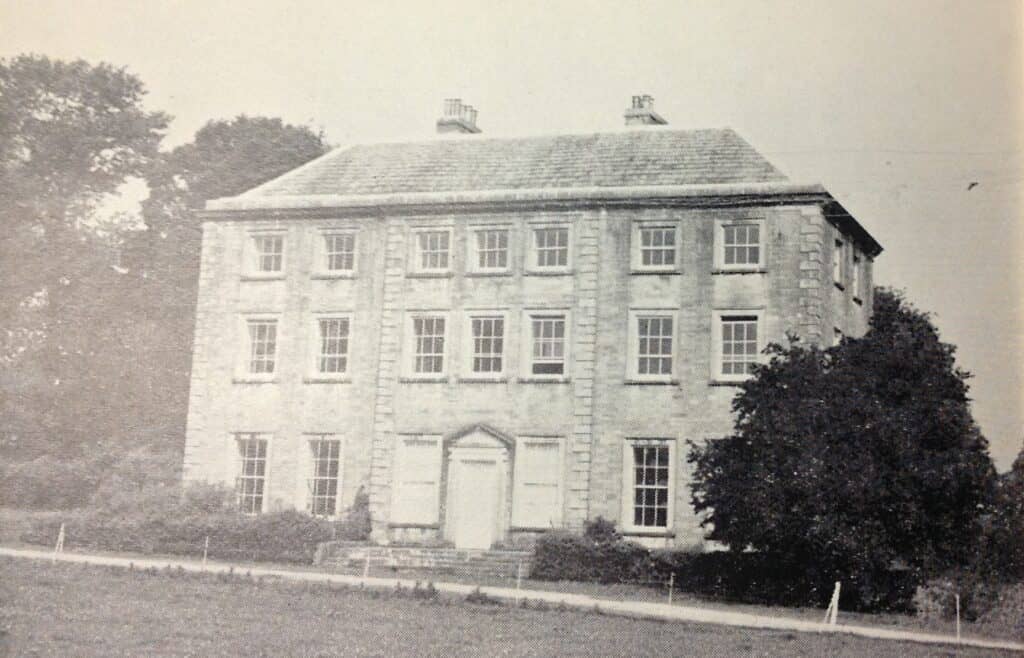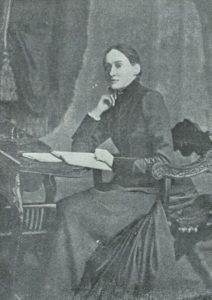The Unravelling of Old Certainties: Elizabeth Bowen and the Search for Stability in Times of Flux
Orlaith Darling, Trinity College Dublin
In the U.S. post-script to The Demon Lover and Other Stories (1945), Elizabeth Bowen expresses the human yearning for security-in-placement:
The search for indestructible landmarks in a destructible world led many down strange paths […] The violent destruction of solid things, the explosion of the illusion that prestige, power and permanence attached to bulk and weight, left us all, equally, heavy and disembodied.[1]
Revisiting this quotation, I am struck by its relevance to the times we inhabit. While Bowen wrote the above amid the devastation of the London Blitz, the same sentiment applies to the dystopian shape of our pandemic-wracked globe. Indeed, for many of us, as for Bowen, the home has become a singular place of refuge – confined to our four walls, the importance of the home as a locus of safety (from disease or destruction) has never been more apparent than now.
Bowen is well-known as a chronicler of Anglo-Ireland and of the lifestyle associated with the Ascendency ‘Big Houses’ which dot the Irish countryside; her fascination with place spans both her fiction and non-fiction. In The Last September, the house, Danielstown, is burned to the ground by the IRA at the end of the novel; in A World of Love, the familial pile, Montefort, is haunted by the spectral presence of a dead patriarch. Bowen also penned an ode to Dublin’s Shelbourne Hotel in 1951, fondly recalled her and her mother breaking into various let-houses to imagine living there in Pictures and Conversations, and wrote a staunch defence of the Big House in her 1940 essay of the same name for The Bell.
In 1942, Bowen composed Bowen’s Court, an elegy to her ancestral family home in Farahy. For Bowen’s generation, the disintegration of the Anglo-Irish tradition was manifestly inevitable. Although fiction like The Last September portrays an Ascendancy in utter denial of this fact, Bowen was keenly aware that she inhabited the coda of Ascendancy life, an impending obliteration which elicited, in Bowen, contrasting writerly responses. While her Irish-based fiction is critical of a blinkered Ascendancy which defers to a mythologised past in the face of destruction, Bowen’s personal ode to her family home illustrates the Ascendancy in the most flattering light. For Bowen, place and past are inherently connected, both coming together in the form of her home to signify ‘indestructible landmarks in a destructible world’.[2]
According to Bowen, Bowen’s Court was ‘a house built of anxious history’.[3] The house was the vision of Henry III, the orphaned Bowen known as ‘the builder’. Bowen speculates that her ancestor’s inspiration sprang from the fact that virtually all his family had died in their erstwhile place of residence, Kilbolane, to which she attributes some sort of ‘fatality’.[4] For Henry, Bowen’s Court was a bid against the death and decay associated with Kilbolane, as well as the centre of what he supposed would be a long lineage. While Henry wished ‘to die in his drawing-room surrounded by hosts of children and the esteem of what looked like a lasting order’,[5] Roy Foster suggests that ‘the Ascendancy built in order to convince themselves not only that they had arrived, but that they would remain’.[6]
This idea of ‘remaining’ is important. Property, land, the home are all fraught topics within the Irish imagination (and, indeed, contemporary Irish society). Bowen’s forebears were granted land in Ireland in payment for services rendered to the British crown – if not invaders themselves, they were affiliated with the Irish’s enemy. Although Bowen describes the Big House as a place of openness and welcome in ‘The Big House’, it was more often interpreted by the Catholic-Irish as a sort of unofficial garrison, a hostile marker of invasion, land confiscation and subjugation. If the Ascendency’s roots in Ireland lay in conquest and acquisition, they were increasingly put on the defence in Bowen’s own time by the War for Independence and the rise of the IRA (who were particularly active in Bowen’s native Cork).

We might read this context into Bowen’s literary turn in Bowen’s Court. In 1942, faced with the dying throes of the Ascendency, the ruins of razed Big Houses, and an overwhelmingly Catholic, chauvinistic Irish Free State, Bowen harkens back to a more romantic era. She describes 1775 both as a year of historical precedent and the point at which ‘Anglo-Ireland knew her power and felt her spirit move.’[7] For Bowen, the building of Bowen’s Court was attended with promise, ‘raised in an age of hope’.[8] Built at the height of the European Enlightenment, the house drew on the Greco-Roman, Italian craftsmanship and sense of symmetry so evocative of the classical era and its values.[9] Throughout Bowen’s Court, Bowen is eager to situate the house’s origins in relation to important, progressive historical movements of the eighteenth century, going to great lengths to tacitly associate Bowen’s Court with the American Revolution, the triumph of the reforming Whigs in England, and the successes of Henry Grattan’s Parliament in Ireland.[10] Indeed, she goes so far as to endow Bowen’s Court with ‘Roman urbane strongness [sic] in a land on which the Romans never set foot’, implicitly paralleling the Ascendancy with the most powerful historical conquering force the world has ever known.[11]
And yet, alongside this historical bent, there is a fair amount of mythologising at play, too. In his survey of the villa, James Ackerman highlights the mythical strain embodied in such structures: ‘the villa accommodates a fantasy that is impervious to reality’.[12] These houses guilefully drew inspiration from concrete historical eras which doubled as mythological fables, professing historical solidity while aspiring to myth. In his study of Irish Houses, Mark Bence-Jones credits Isaac Rothery with designing Bowen’s Court.[13] Bowen, however, claims to be unable to locate any architect’s or builder’s name:
In none of those boxes, drawers and cupboards that gave up so much for this family history have I been able to find so much as a sketch or a note relative to the building of Bowen’s Court. Nor are there, among all the family letters, any referring to the going-up of the house. The ground plans, the elevations, the estimates, the builder’s notes and receipts, the records… are all nowhere.[14]
Her bewilderment at the dearth of blue-prints serves to galvanise Bowen’s Court’s mythical origin – the lack of documentation regarding its ‘going-up’ gives the illusion that the structure was simply always there.
With Bowen’s Court and the extended Bowen family thus set up to be measured against history and myth, they fail on both counts. The idea of Bowen’s Court as a mythological, historical and ideological masterpiece was never fully realised – in a literal sense, the building was never fully completed. With the family coffers failing to keep pace with Henry’s ambition, the north-east corner of the house was left a partial, unfinished square. Bowen notes that the house was meant to benefit from continuous custodianship, positing that Henry III expected his son to install ‘the missing corner and perfect Bowen’s Court into the intended square’.[15] It remained this way until the house itself was sold by Bowen and knocked down by an unscrupulous farmer. That the house was never completed renders the structure itself a permanent metaphor for how successive generations of Bowens failed to live up to the legacy bequeathed them, and a symbol for how the Ascendancy was never completed before it was destroyed utterly. A form without function, Bowen’s Court represents what Malcolm Kelsall calls an ‘uncompletable idealism’.[16]
Despite the inescapability of Bowen’s Court’s failure, or perhaps because of it, Bowen seems determined to defend her ancestors’ ambition. There is a sense that she admires Henry III’s vision for the family and its place in the Ascendency, even if she knows that this vision was naïve – her concession that ‘perhaps symbols are dangerous: they tempt one to deflect narrative or misrepresent facts’ is tempered with the claim that ‘all thought starts in feeling, and all thought is dominated by the symbolism of the dream’.[17] Throughout Bowen’s Court, Bowen wilfully deploys historical material to lend credence to what is a highly subjective and romanticised account of her family history. The constant interweaving of historical events – written in the cogent, impartial prose of any credible history – and Bowen’s own conjecture results in a blurring of fact and imagination, an effect purposefully deployed. As Otto Rauchbauer highlights, Bowen oscillates freely between chronical material and the narrative mode,[18] and this tactic allows Bowen’s Court to exist as much in ‘thought-form’ as historical form, imbuing the structure with ‘transhistorical’ value.[19] Indeed, Bowen generally complicates the idea of history, claiming in ‘The Bend-Back’ (1950) that:
We must not shy at the fact that we cull the past from fiction rather than history, and that art, out of the very necessity to compose a picture, cannot but eliminate, edit – and so, falsify.[20]
And again, in Pictures and Conversations: ‘history, as more austerely I now know it, is not romantic. But I am.’[21]
It seems unavoidable that Bowen’s approach to the past is borne of an emotional need to ensure her family’s place in the roll call of history. This need is especially urgent in light of the destruction of all physical evidence that the Bowens existed, and the imminent end of the family line – Bowen herself was an only child who, in turn, had no children. The creation of a family myth is not a process cemented with the construction of Bowen’s Court itself – it is one which Bowen is still in the process of making in Bowen’s Court. While Henry III’s contribution to the family was his idealised house, Bowen’s is her mythologised account of this past.
***
Having fondly studied Elizabeth Bowen as an undergraduate, I revisited her work in recent months, seeking the nostalgic aura she so effortlessly creates. I reread The Last September in my parents’ house in April, on lock-down, and began The Shelbourne in September, having moved to new rented rooms in the city. Like Bowen, I was seeking – and still am – a sense of stability. The ephemerality of placement, the sense of looming deracination which has become so connotative of the Irish housing/rental market, has only been exacerbated by the current pandemic. In my current house, my bed is suspended on a balcony above the rest of my bedroom. I climb up the ladder at night and lie under the eaves, closeted against a scary world and relishing my own small corner of safety.
Though it may seem counterintuitive to suggest it, I believe that Bowen is, more than ever, a writer for our times. Faced with the unravelling of old certainties, Bowen seeks stability in place; as one way of life ends, transitioning into something totally other, Bowen finds comfort in history. What characterises life at present more, I wonder, than ‘the search for indestructible landmarks in a destructible world’? In this time of flux, we can only hope that the ‘indestructible landmarks’ we seek are not, as Bowen’s Court turned out to be, illusory.
Orlaith Darling is a PhD candidate in the School of English, Trinity College Dublin, where she researches contemporary Irish women’s short fiction. She is a co-founder of the Contemporary Irish Literature research network (CIL) and co-editor of Spit the Pips: https://contemporaryirishlit.wordpress.com/ . Her research is funded by the Irish Research Council. She tweets @darling_orlaith
To reference this blogpost see our guide here.
Darling, Orlaith. (2020). ‘The Unravelling of Old Certainties: Elizabeth Bowen and the Search for Stability in Times of Flux’, Irish Women’s Writing Network Blog, 07 December 2020, Available at: https://irishwomenswritingnetwork.com/2020/09/21/the-extinguished-castle-elizabeth-bowens-haunted-house-in-her-table-spread/ [Accessed DATE]
[1] Elizabeth Bowen, U.S. Post-Script to The Demon Lover and Other Stories (1945), Eibhear Walshe ed. Elizabeth Bowen’s Selected Irish Writings (Cork: Cork University Press, 2011), 122-4.
[2] ibid
[3] Bowen, Bowen’s Court (London: Vintage, 1999),457; 19 (BC).
[4] BC, 118.
[5] BC, 169.
[6] Vera Kreilkamp, The Anglo-Irish Novel and the Big House (New York: Syracuse, 1998), 8.
[7] BC, 161.
[8] Ibid.
[9] Malcolm Kelsall, Literary Representations of the Irish Country House (Hampshire: Palgrave Macmillan, 2003), 173.
[10] BC, 161-8.
[11] BC, 31.
[12] James Ackerman, The Villa: Form and Ideology of Country Houses (London: Thames&Hudson, 1990), 9.
[13] Mark Bence-Jones, A Guide to Irish Country-Houses (London: Constable, 1988), 46.
[14] BC, 167-8.
[15] BC, 168.
[16] Kelsall, 173-5.
[17] BC, 161.
[18] Otto Rauchbauer, Ancestral Voices: The Big House in Irish Literature (Hamburg: Umschlagentwurf, 1992), 9.
[19] Kelsall, 166.
[20] Bowen, ‘The Bend-Back’, Hermione Lee ed. The Mulberry Tree (London: Virago, 1986), 57-8.
[21] Bowen, Pictures and Conversations, Lee ed.278.
Image from Mark Bence-Jones, ‘Bowen’s Court: An Appreciation’, Quarterly Bulletin of the Irish Georgian Society 4:3 (1961): 32-40.



